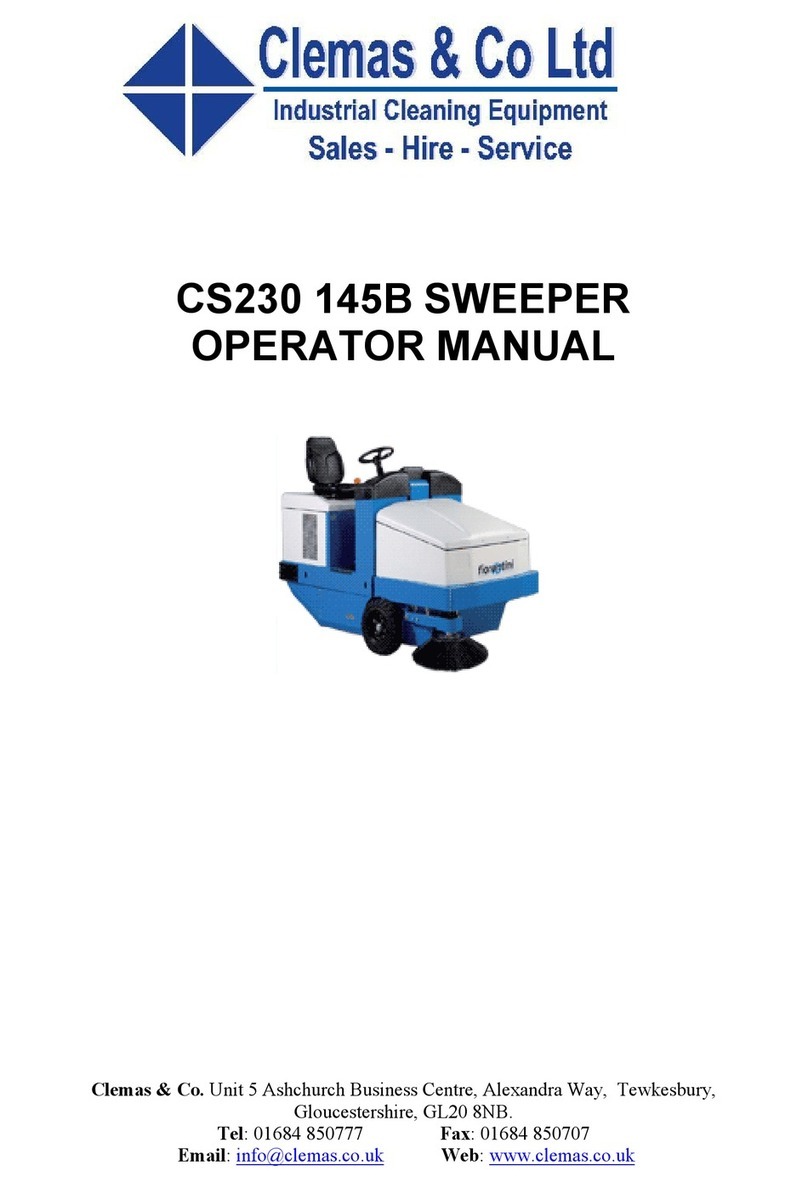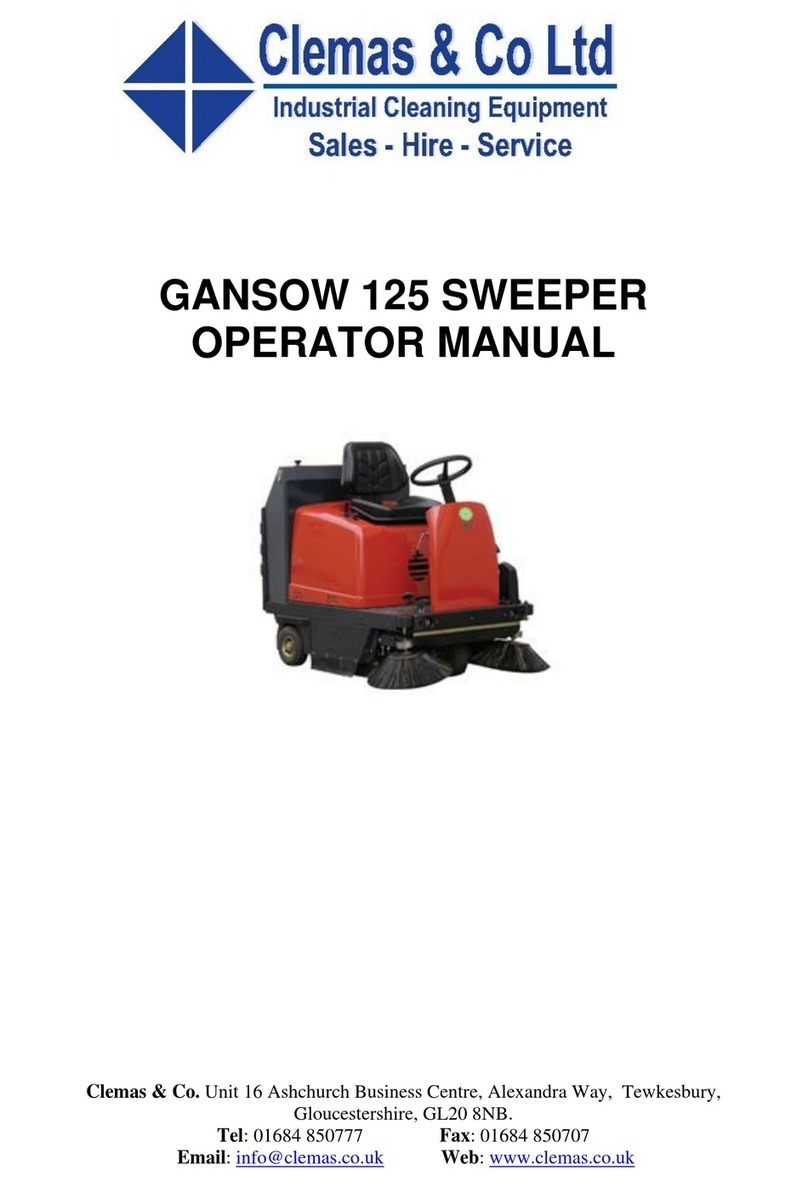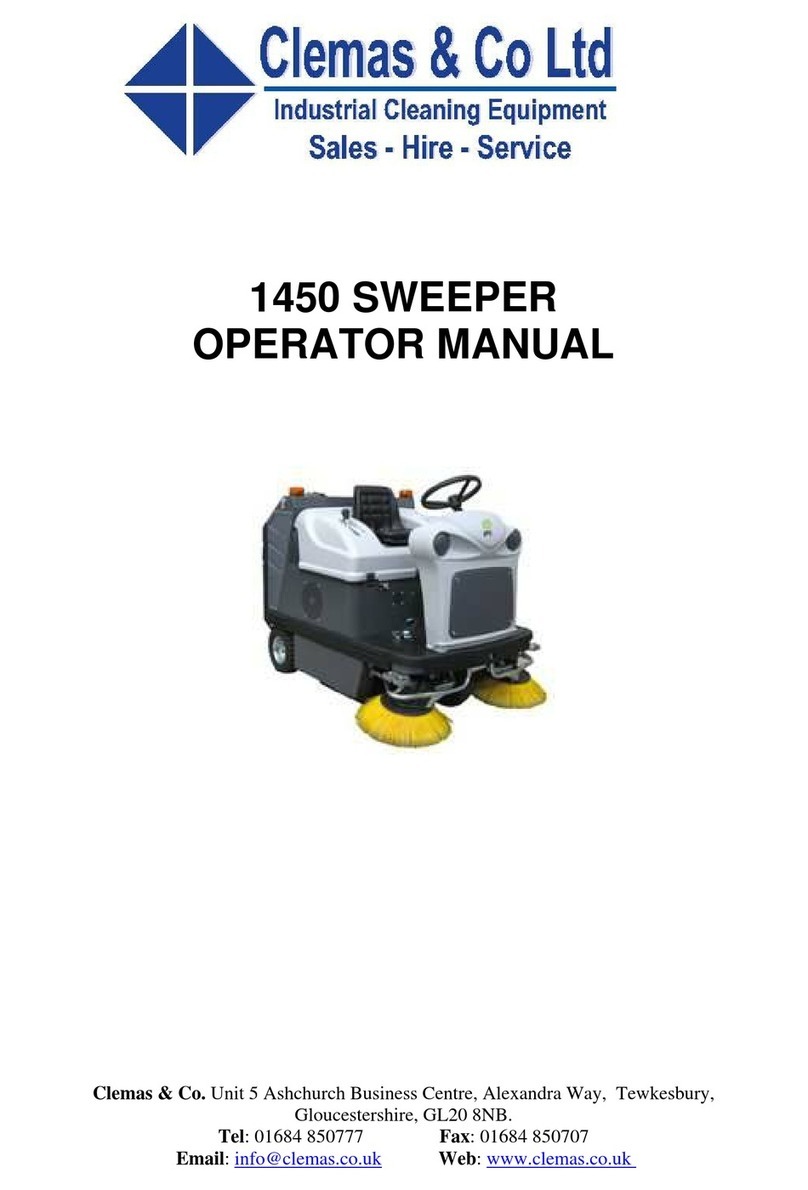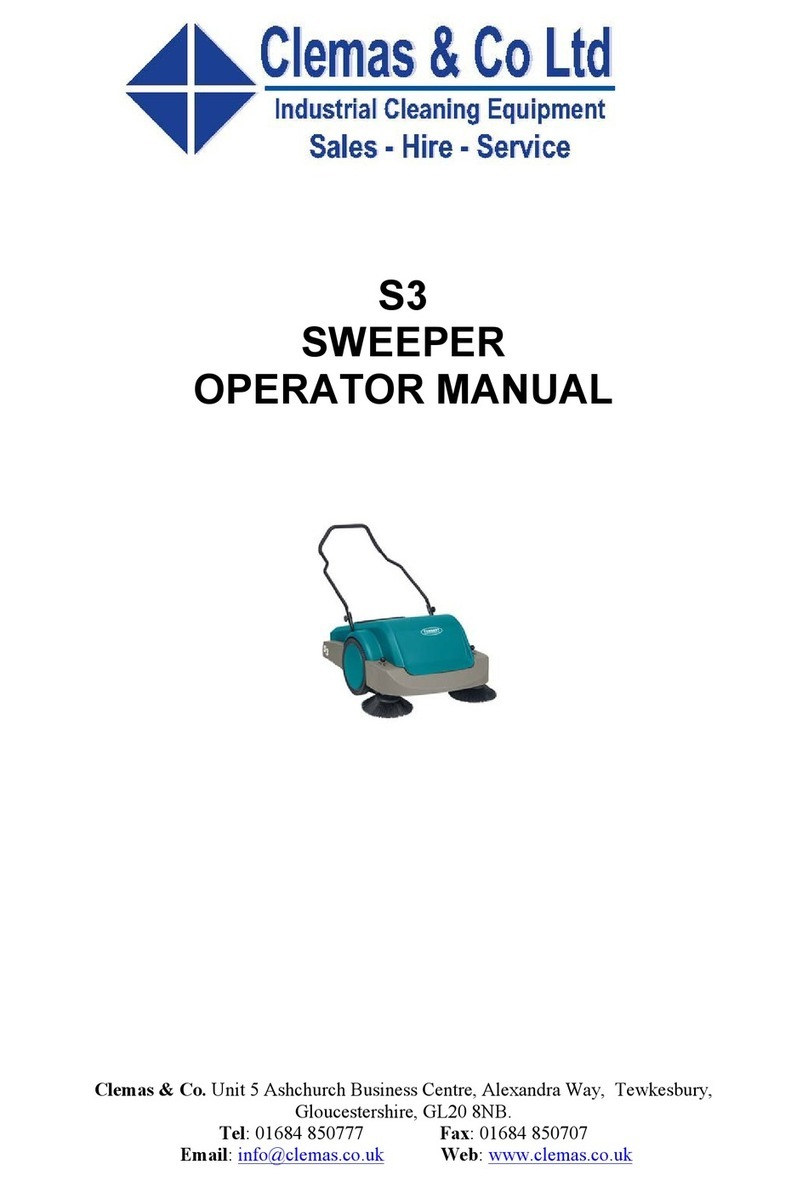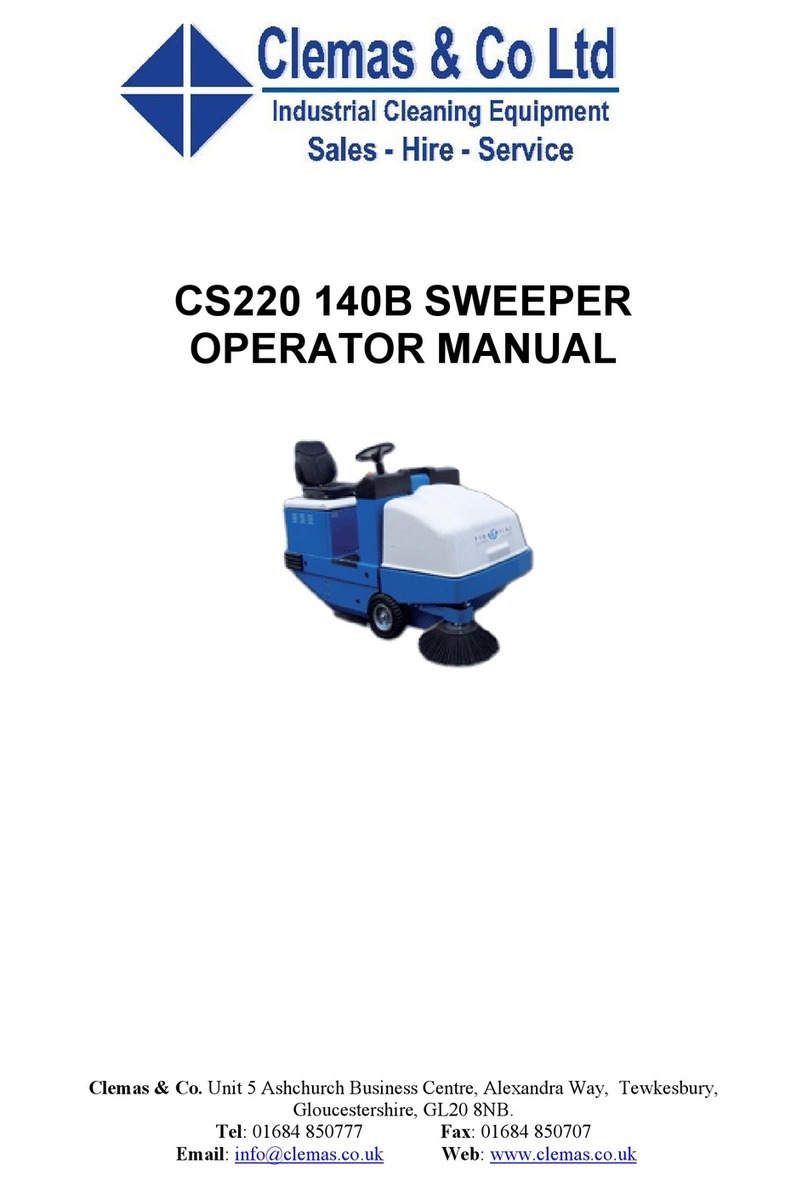
Pag.4
ENGLISH(Translationoforiginalinstructions)
4.1-UNPACKINGTHEMACHINE
- Unpack the machine with the utmost care; avoid carrying out any
operation that could damage it.Once it has been unpacked, check
whether it is damaged.If you notice that it is not in correct working
order, DONOTuse it and inform your dealer.
- For packaging and transport purposes, some parts and accessories
are supplied disconnected from the machine. To assemble them,
carefully follow the instructi-ons given in the relevant sections.
- Contents of the package
- N° 1 Machine
- N° 1 or 2Side brush/es
- N° 2Ignition key
- N° 1Instruction booklet
- N° 1Spareparts’ list
-N°1Declarationofconformity
- N° 1Warranty slip
- N° 4 Batteries (on request)
- N° 1 Battery charger (on request)
- N° 1 Unblockingkey
In thecaseinwhichoneoftheabove-mentioned partsismissing,please
inform your dealer straight away.
For security reason during the transport, the
ignition key as been fixed inside the bag containing
the technical documentation.
Take care to keep the packaging materials (bags,
cartons,pallets,hooks,etc...)outofthereachof
children.
3.1-FOREWORD
Thepurposeofthismanualistoinformtheoperatorofthebasicrules,
safetyrulesandcriteriawhichmustbeobservedwhenusing,adjusting
and maintaining themachine. The machine has been developed and
manufactured to ensure an excellent performance andthe utmost
comfort and ease of operation in a variety of working conditions.
Before delivery, the machine has been checked at our factory and by
our dealer to make sure it is handed over to you in perfect working
order.To maintain the machinein this condition and ensure problem-
free operation, it is essential to follow the routine maintenance
instructions given in this handbook.
3.2-UTILIZATIONFIELD
The machine, composed of a brush and suction system,is to be used
EXCLUSIVELYtocleandrysurfaces.Anyotherusecouldbecauseof
damagetopeopleorthings andistherefore PROHIBITED.
4.2 - Precautions to be taken before attempting to put
the machine at work:
To facilitate transport, the side brush/es haven't been assembled in
theiractualworkposition.Therefore,beforeusingthemachine,assemble
them as shown in Par. 4.3.
4.3-ASSEMBLINGTHESIDEBRUSH
To assemble the side brush in its correct position, operate as follows:
1: Place the brush-rising lever 5 Fig.2 on the OFF position.
2: Unscrew the screw from the side brush motor’s shaft.
3: Take the protection away from the key.
4: Position the brush complete with flange on the shaft
5: Screw the blocking screw back.
4.4: PREPARING THEBATTERYFOR
OPERATIONANCHARGING.
To charge the battery,proceed as described below.
4.4.1 FIRSTCHARGE
- Remove the caps of the battery cells.
-Fill thebattery withelectrolyticliquid.
-Itisadvisabletocarryoutthisoperationbeforethebatteryismounted
on the machine from being damaged by the electrolytic liquid of the
battery.This operation should be done in a sufficiently ventilated
environment.Do not smoke.Now put the battery in its housing and
connect it appropriately,making sure torespect the polarity.
ConnectthebatterychargertothesockedFig2locatedontherearpart
of the machine and charge for at least 2 hours.
After charging, put the caps back on the battery cells.
4.4.2:RECHARGING
With the machine turned off:
- Remove the caps of the battery cells.
- Top up the battery with distilled water.
Connect the battery charger (Fig.2)
Carry this operation out following the NOTE instructions of
paragraph 4.4.1
4.4.3CONNECTINGTHEBATTERIES
Connect the 4 batteries as shown in the pictures:
Fig.1

